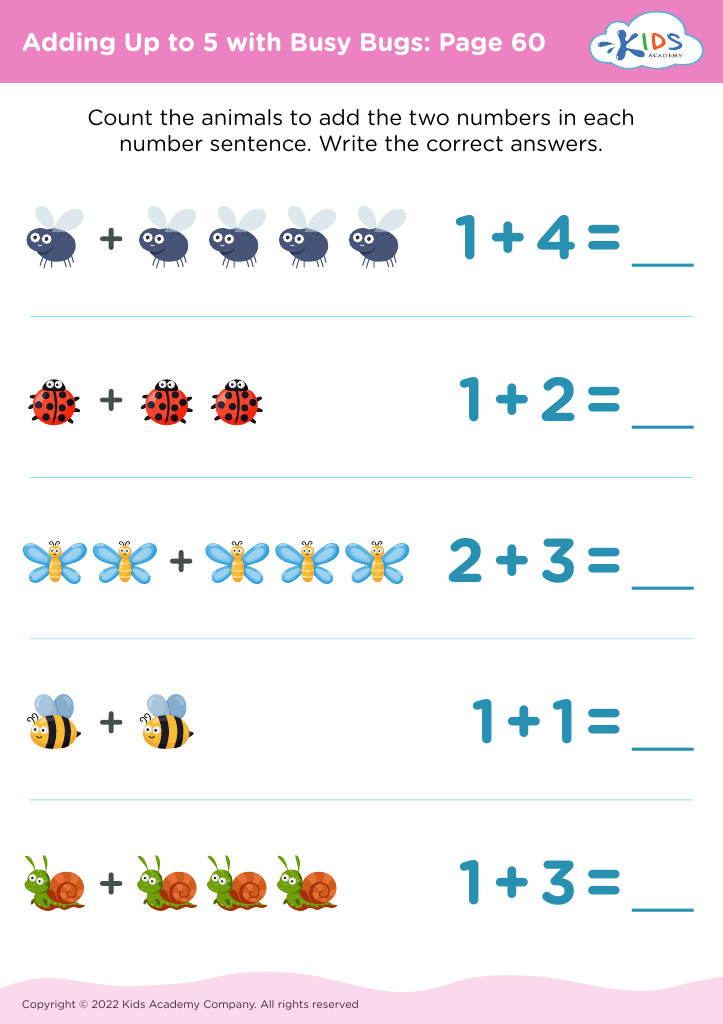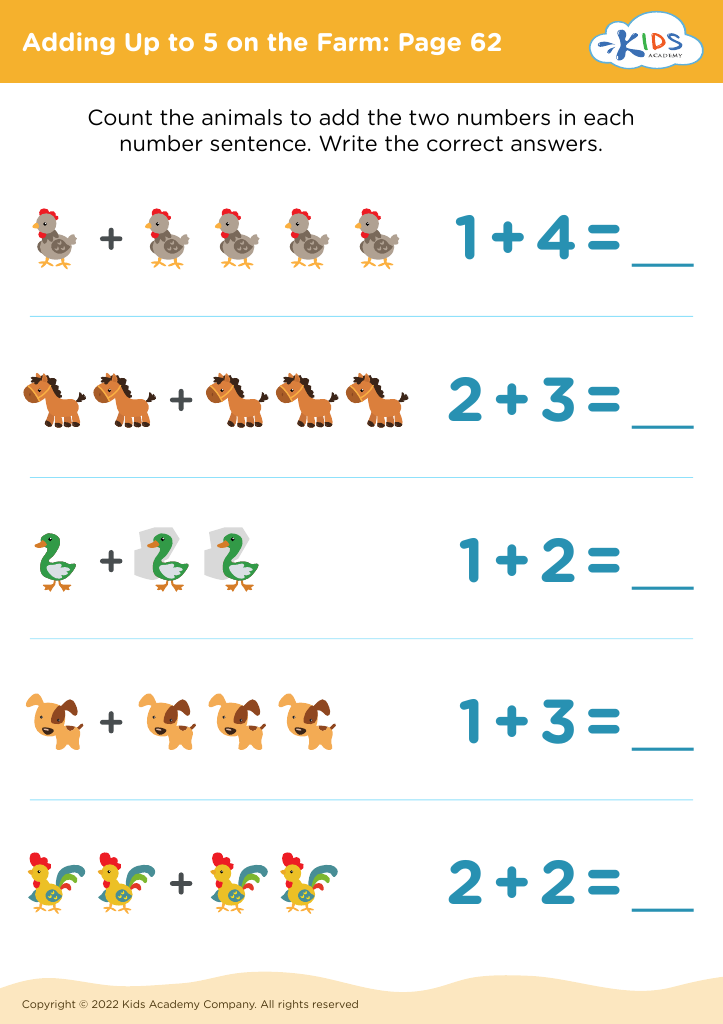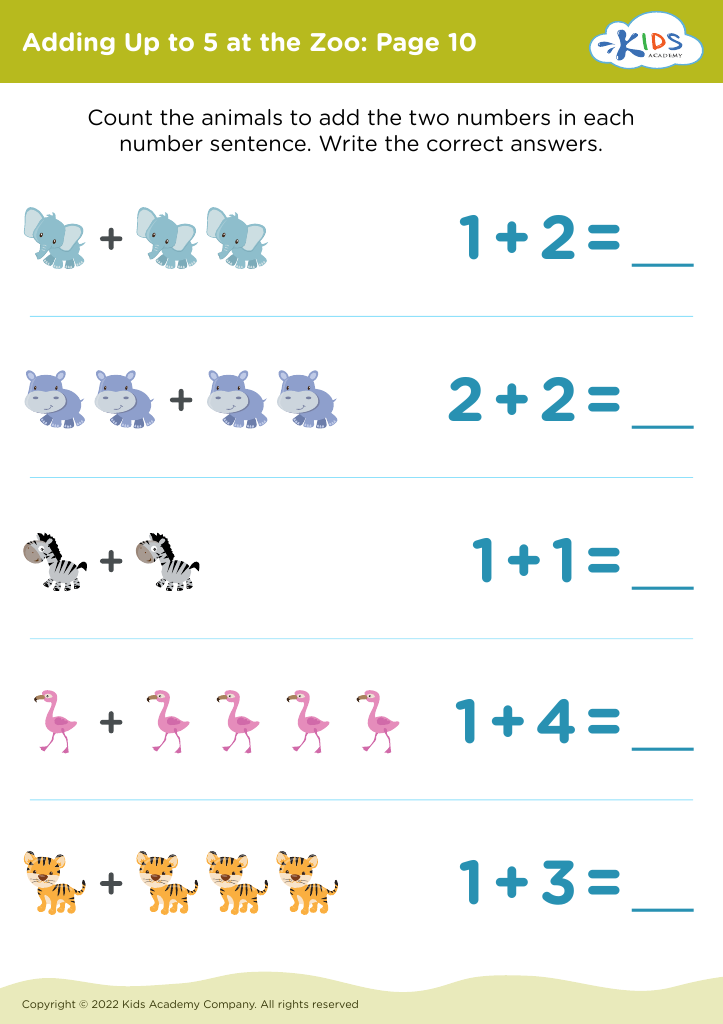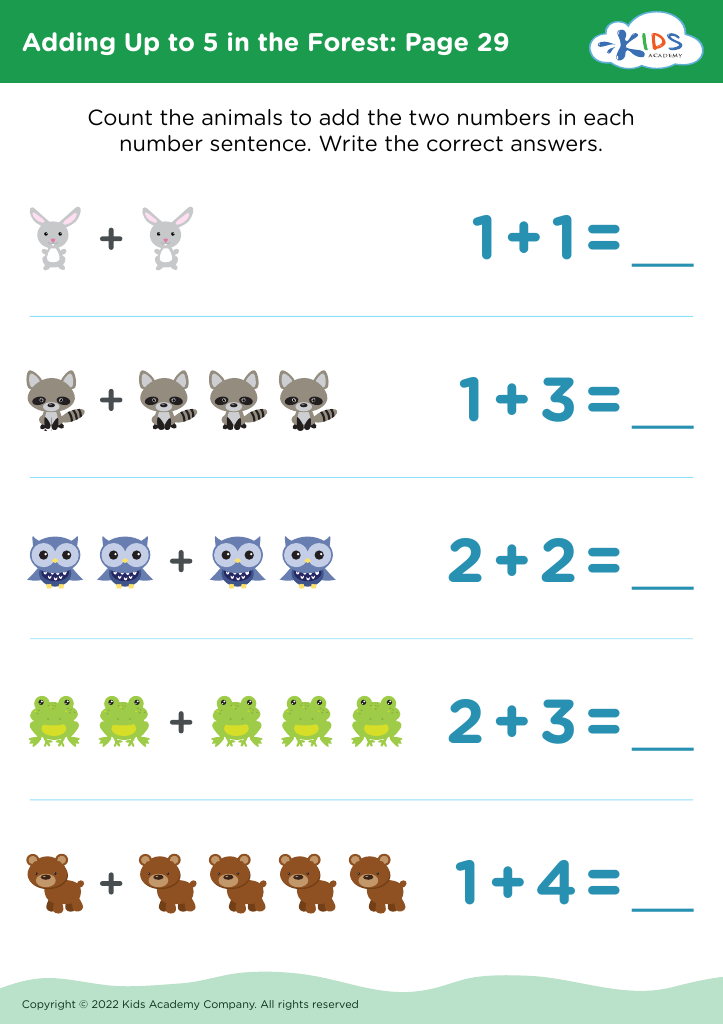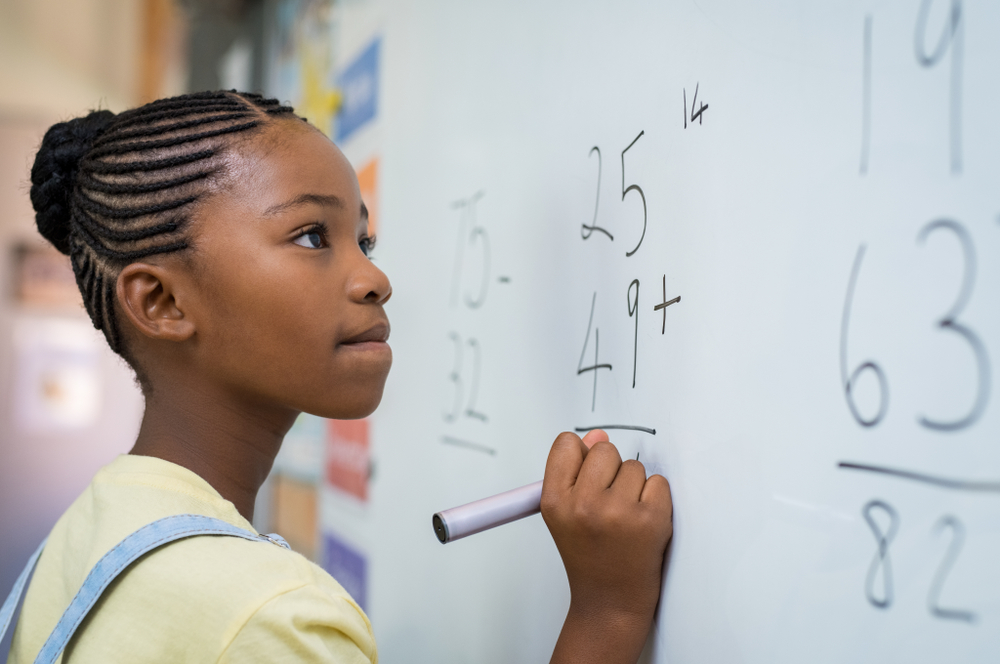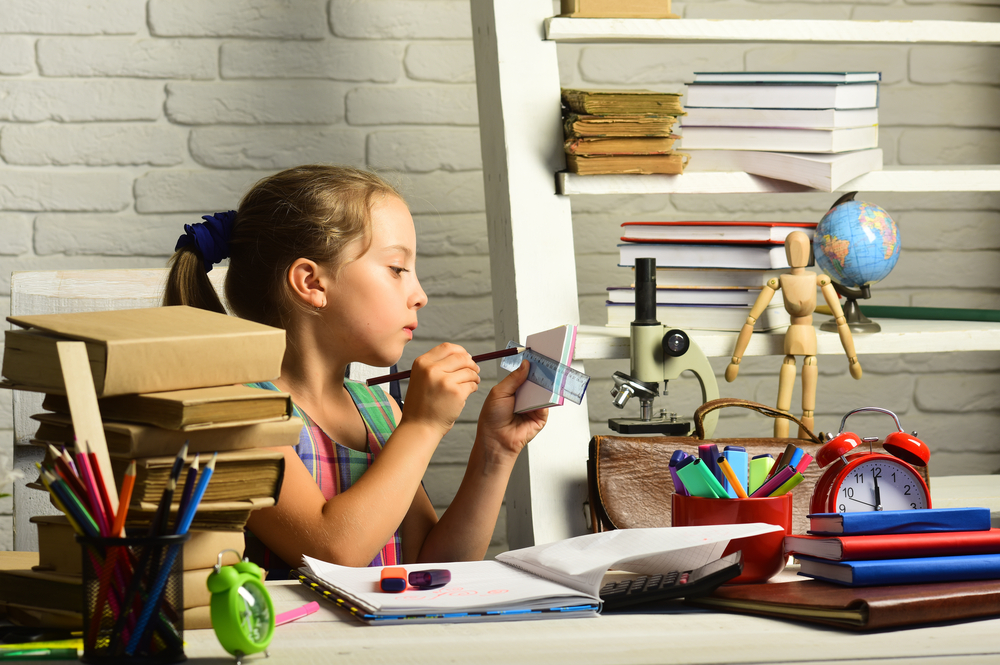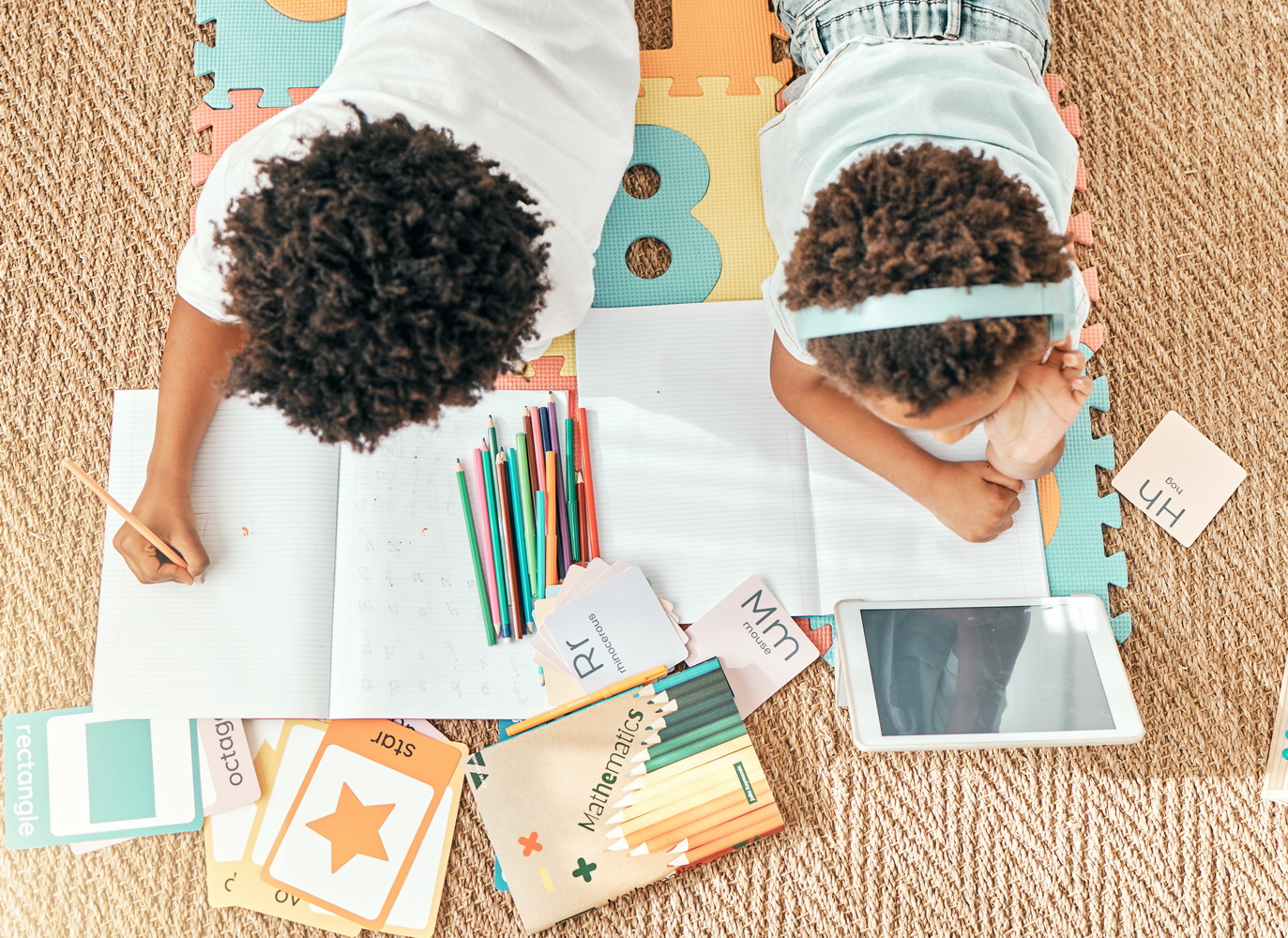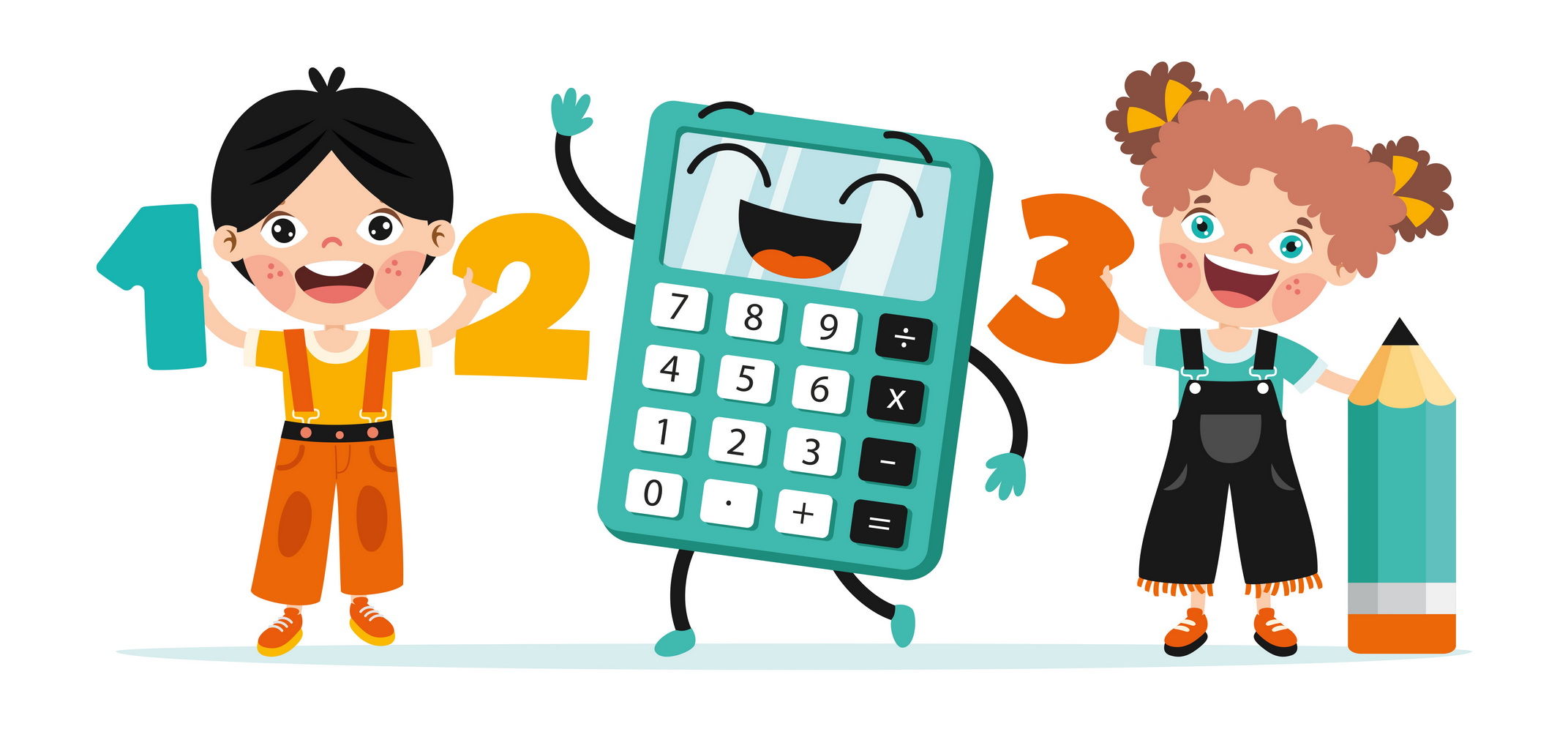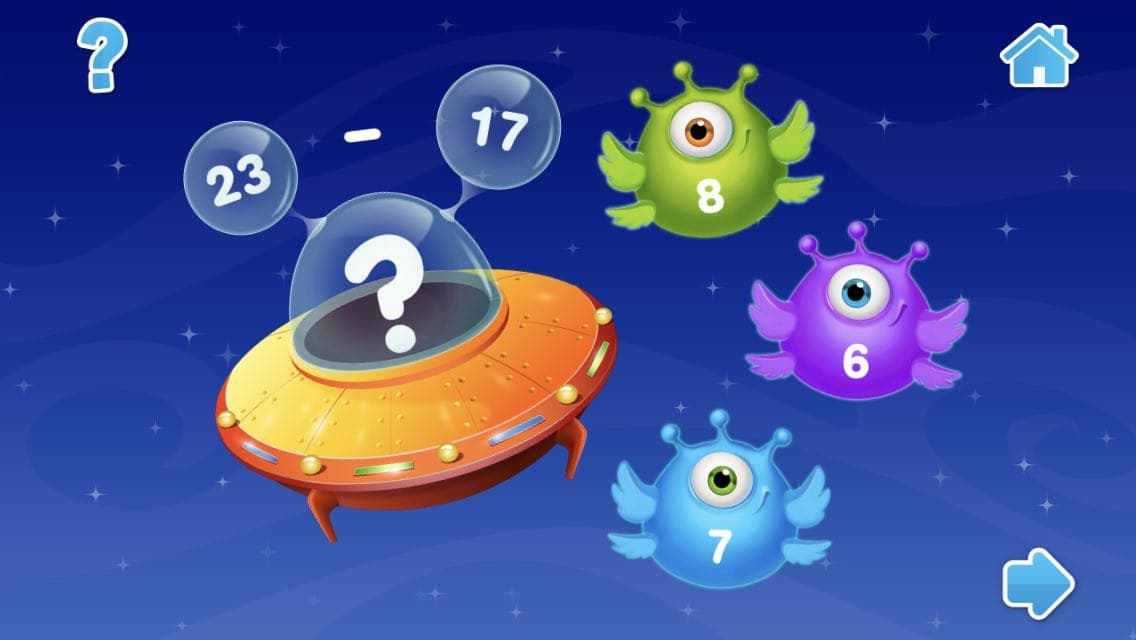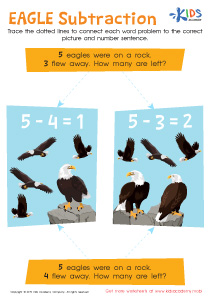Visual learning enhancement Addition Worksheets for Ages 3-9
4 filtered results
-
From - To
Discover our engaging Visual Learning Enhancement Addition Worksheets designed for children ages 3-9! These worksheets make learning addition fun and interactive, helping young learners grasp essential mathematical concepts through vibrant visuals and stimulating activities. Tailored to improve visual comprehension and retention, our resources utilize colors, images, and engaging scenarios that cater to different learning styles. Perfect for both classroom settings and home practice, each worksheet fosters creativity and critical thinking. Encourage your child's love for math and support their development with our carefully crafted addition worksheets! Start enhancing your child's learning experience today and watch them flourish in their mathematical journey.
Parents and teachers should care about visual learning enhancement for children aged 3-9 because it supports the natural learning styles of young learners. This age group is in a critical stage of cognitive development where visual learning can significantly boost engagement, retention, and comprehension. Visual aids like charts, images, and manipulatives make abstract concepts concrete, turning learning into an engaging, multisensory experience.
Visual tools can simplify complex ideas, helping children grasp fundamental concepts in subjects such as math and science more effectively. For instance, using visual organizers for math addition helps children understand relationships and patterns, fostering a confidence that traditional methods may not provide. Furthermore, visuals cater to various learning styles, ensuring that both visual and kinesthetic learners thrive.
Incorporating visual learning materials also enhances children’s ability to make connections between ideas and enhances their memory through patterns and images. This kind of learning can lead to better academic performance and a greater love for learning in the long run. Ultimately, by nurturing visual learners, parents and teachers can create a positive and productive learning environment that lays a foundation for lifelong educational success.
